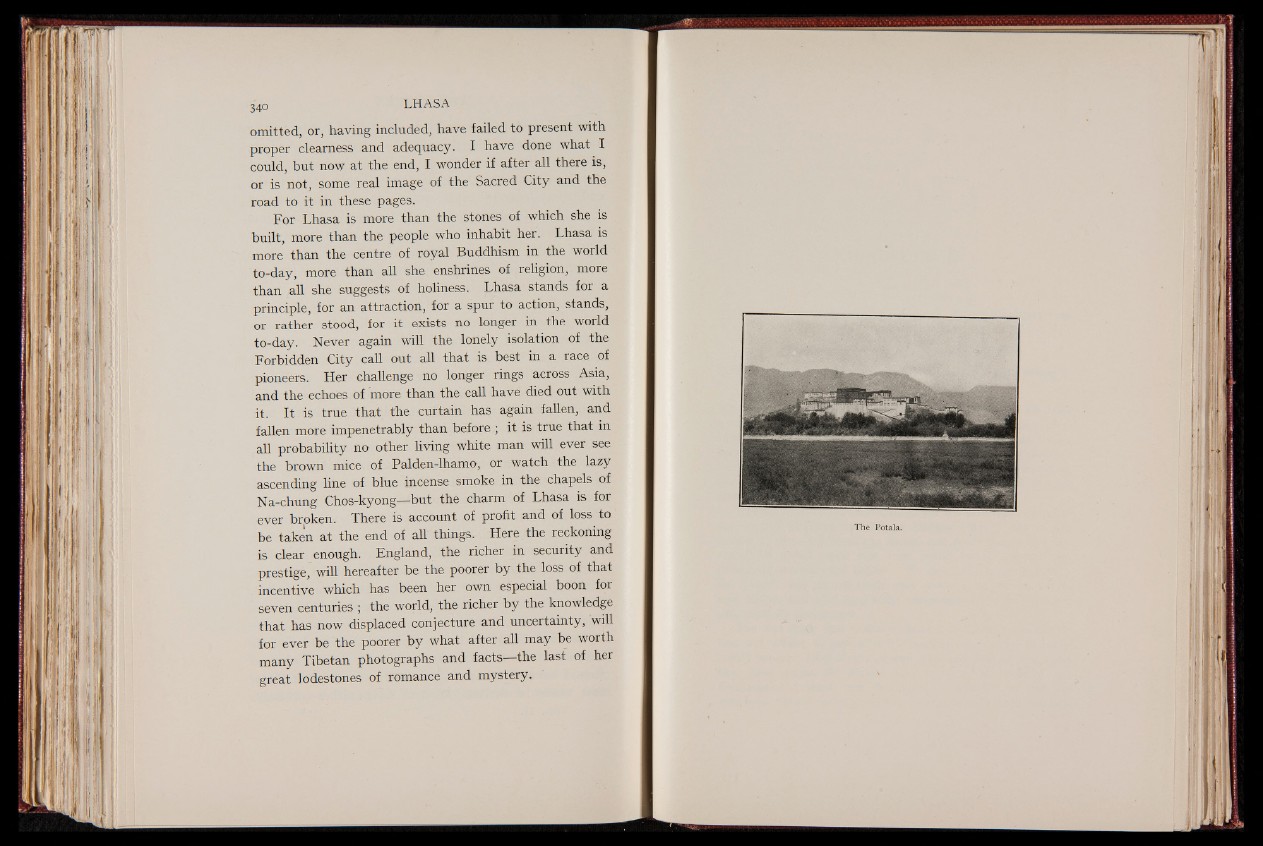
omitted, or, having included, have failed to present with
proper clearness and adequacy. I have done what I
could, but now at the end, I wonder if after all there is,
or is not, some real image of the Sacred City and the
road to it in these pages.
For Lhasa is more than the stones of which she is
built, more than the people who inhabit her. Lhasa is
more than the centre of royal Buddhism in the world
to-day, more than all she enshrines of religion, more
than all she suggests of holiness. Lhasa stands for a
principle, for an attraction, for a spur to action, stands,
or rather stood, for it exists no longer in the world
to-day. Never again will the lonely isolation of the
Forbidden City call out all that is best in a race of
pioneers. Her challenge no longer rings across Asia,
and the echoes of more than the call have died out with
it. It is true that the curtain has again fallen, and
fallen more impenetrably than before ; it is true that in
all probability no other living white man will ever see
the brown mice of Palden-lhamo, or watch the lazy
ascending line of blue incense smoke in the chapels of
Na-chung Chos-kyong— but the charm of Lhasa is for
ever broken. There is account of profit and of loss to
be taken at the end of all things. Here the reckoning
is clear enough. England, the richer in security and
prestige, will hereafter be the poorer by the loss of that
incentive which has been her own especial boon for
seven centuries ; the world, the richer by the knowledge
that has now displaced conjecture and uncertainty, will
for ever be the poorer by what after all may be worth
many Tibetan photographs and facts— the last of her
great lodestones of romance and mystery.